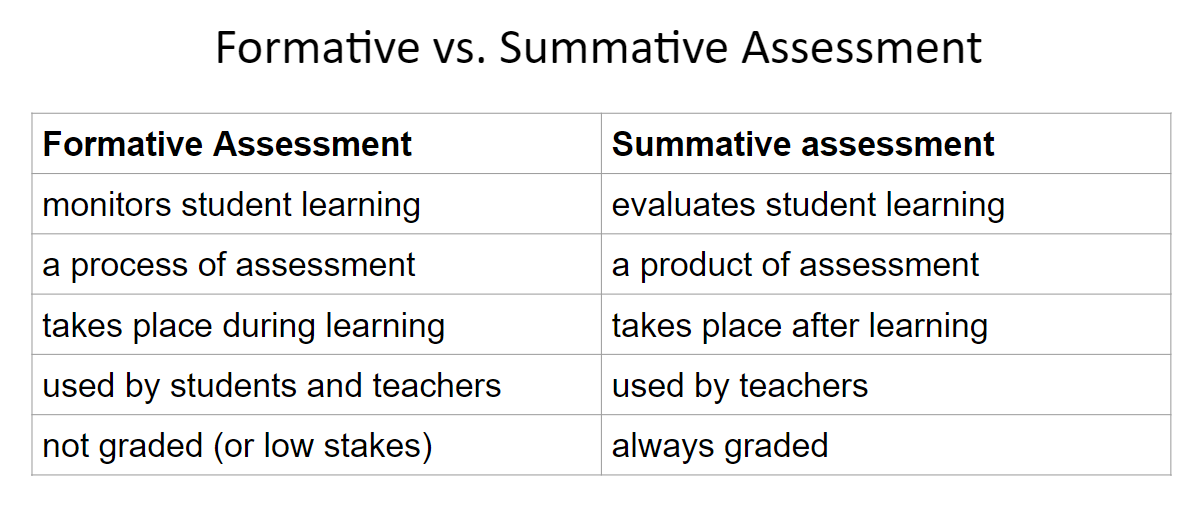Formative Assessment
Instructors use formative assessment all the time – it can be as simple as asking a question of the class to gauge their level of understanding. Formative assessment helps determine which students are learning various aspects of the course content and how well. It can be used continuously throughout a lesson to check in on student understanding.
Following are examples of formative assessment techniques:
- having students complete an exit ticket with a question about the day’s topic
- holding up a certain number of fingers indicating how well they understand the topic
- using a polling system either in a face-to-face class or in the learning management system
These types of assessments are are generally ungraded, and help the instructor determine if additional content or scaffolding needs to be delivered, while there’s still time to help the students cement their learning prior to a high stakes assessment.

Benefits of formative assessment
When used to determine adjustments that can be made to instruction to improve student learning, there are several benefits to instructors and students.
Instructors:
- learn who is struggling and where, so intervention can be provided
- Make changes in instruction before it is too late (i.e. a test or paper has already been assigned and completed)
Students:
- know when they are learning and when they are struggling.
- reflect on their efforts and make changes prior to the summative assessment
An example of formative assessment – minute paper
A simple example of a formative assessment technique is a “minute paper” (or “virtual exit ticket”). This technique helps the instructor get a “barometer” on what effect their actions/methods have on the class and on the individual learners. It gives the instructor a good sense of what may need “tweaking” or re-working for the next class session, to improve student learning, retention, or engagement.
Determine in advance a prompt, representing what information is to be gathered from the students. Examples might include:
- Today was hard because…
- What do you understand well?
- What do you still have questions on?
- How does this build on something you learned earlier in class?
The instructor then decides when to administer the assessment. Administer the assessment at the end of class if it relates to the day’s lecture. If the prompt relates to the previous day’s homework, the assessment could be administered at the beginning of class.
In a face-to-face class, students could write a response to the prompt and turn them in on the way out the door. And for an online class, the students could be instructed to post their paper as a submission.
Later, the instructor quickly reviews the responses, making a tally of common questions. The next day, the instructor shares back with the class (or posts an announcement in the LMS) summarizing the questions, and reviewing or applying additional scaffolding. This is important since sharing what the instructor learned by administering the minute paper closes the loop on instruction, and connects learning to teaching.
Links to other formative assessment techniques are provided at the bottom of the page.
Professional development opportunities
There are no upcoming events at this time.
Related books in the LTC collection
Checking for understanding: formative assessment techniques for your classroom, 2nd ed. /
Fisher, Douglas
Assoc. for Supervision & Curriculum Dev. 2nd edition 2014
Learning and Teaching Center 378.167 F533c 2014
Formative classroom assessment :theory into practice /
McMillan, James
New York :Teachers College, Columbia University,c2007.
Learning and Teaching Center 371.26F724 2007
Classroom assessment techniques /
Cross, Patrica & Angelo, Thomas
San Francisco: Jossey Bass 1993
Learning and Teaching Center Call Number: 378.125 A584c
Additional resources and scholarship
Lists and descriptions of various formative assessment techniques, with instructions for use:
The University of Southern California

